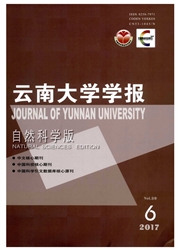

 中文摘要:
中文摘要:
利用新一代多普勒雷达产品和地面加密自动站等资料,对2013年8月11—12日发生在滇西高原的一次强降水过程进行分析.结果表明,此次过程是500 h Pa青藏高压和副热带高压之间的两高辐合区及700 h Pa西南气流影响造成;雷达图上,以层状云降水回波为主的混合降水回波,强度未超过40 d Bz;雷达径向速度场存在暖平流加辐合的风场特征;低层长时间持续西南气流以及对流层中上层冷空气的入侵与强降水过程的发生及维持密切相关;利用改善的EVAD方法计算出的散度场和垂直速度场在强降水发生发展的不同时期分布不同,对降水的增强和维持有较好的指示意义.
 英文摘要:
英文摘要:
Based on the detection data of weather radar( CINRAD / CC) and more surface automatic weather stations in Dali prefecture,a heavy precipitation process on August 11—12,2013 has been analyzed. The results show as follow: the precipitation process was affected by the convergence zone of Tibetan high and subtropical high on 500 h Pa and the southwest airflows on 700 h Pa. Viewing from the radar echo figures,the intensity of mixing precipitation echoes mainly composed by stratiform cloud echoes was less than 40 d Bz,and there were wind field characteristics of warm advection and convergence in the radar radial velocity fields. Both the long duration of southwest airflow at low layers and the invasion of the cold air at the middle- upper layers of troposphere had close relationships with the occurrence and maintenance of the heavy precipitation. The divergence fields and vertical velocity fields calculated by improved EVAD method altered with different phases of the heavy precipitation,which had a great indication for forecasting the strengthening and sustainment of the precipitation.
 同期刊论文项目
同期刊论文项目
 同项目期刊论文
同项目期刊论文
 期刊信息
期刊信息
